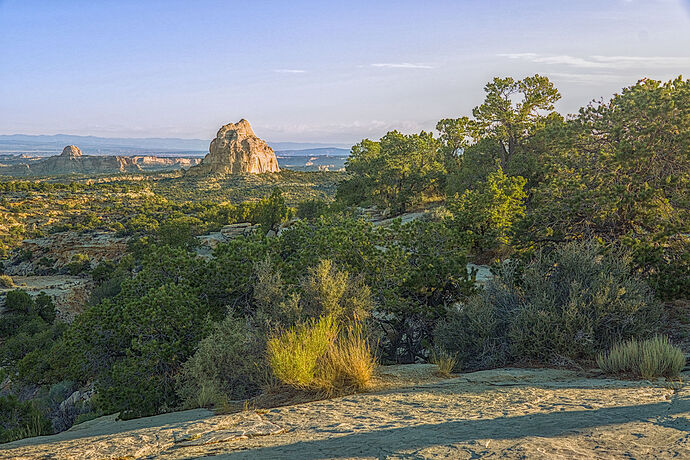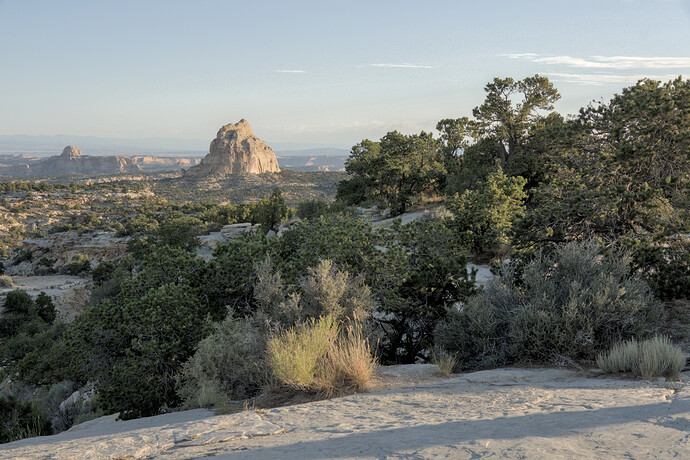dt4.8.1
I shoot daytime outdoors mostly. A constant frustration is how to keep detail and contrast in the highlights. Clouds are the easy example. But also things like white swan feathers, polar bear fur, etc.
I use zebras in-camera to check for over-exposed. Generally, I’m using -1 to -2 stops of exposure compensation until I have just-a-few-zebras or no-zebras.
Here’s SOOC jpeg. there are clouds visible in the sky. (-2 exposure comp for this photo)
If I add +2 exposure to the jpeg, this is what the camera thought was correct metering. The foreground looks properly exposed, but the sky and mountains are blown out.
Opening the raw in DT, exposure automatically corrects for the exposure comp. Using either the sigmoid or filmic RGB defaults, the sky looks like the blown-out jpeg.
I get that sigmoid and filmic RGB are both applying a s-curve to get contrast in the midtones. Which also means a loss of contrast in the highlights and shadows. But I’m stumped how to fix it.
I use a default style I apply to ALL of my photos to apply “standard” corrections needed for “all” photos. It would be nice to have something generic-ish that I could
Also, I want to use only scene-referred modules.
Here’s my final edit, which is supposed to corrected to as-seen live (what I remember), not a creative edit. A lot of the normal things to apply to any raw.
Specifically for the clouds and sky, I’m using tone equalizer to pull down the brights. I left it using EIGF and RGB Power Norm. As I understand, the EIGF mask is pulling down the clouds and the surrounding sky by the same amount, but sigmoid is raising the clouds just a little more when it does the tone mapping.
Not totally happy with it. there could be more contrast in the clouds. Mabe darkening the blue, or something else.
Here’s the source image. Also a style that I apply to all my images. Post-style is actually my starting point for any edit.
Again, I’m looking for something that could be used in a style for ANY photo, or a generic technique, not specifically this example.
Not a play-raw. Asking for coaching and methodology.
Andrew Default Sigmoid.dtstyle (8.6 KB)
DSC03506.ARW.xmp (22.9 KB)
DSC03506.ARW (24.0 MB)
USA Utah, Colorado Plateau, BTW.
This file is licensed Creative Commons, By-Attribution-Non Commercial, Share-Alike.

















